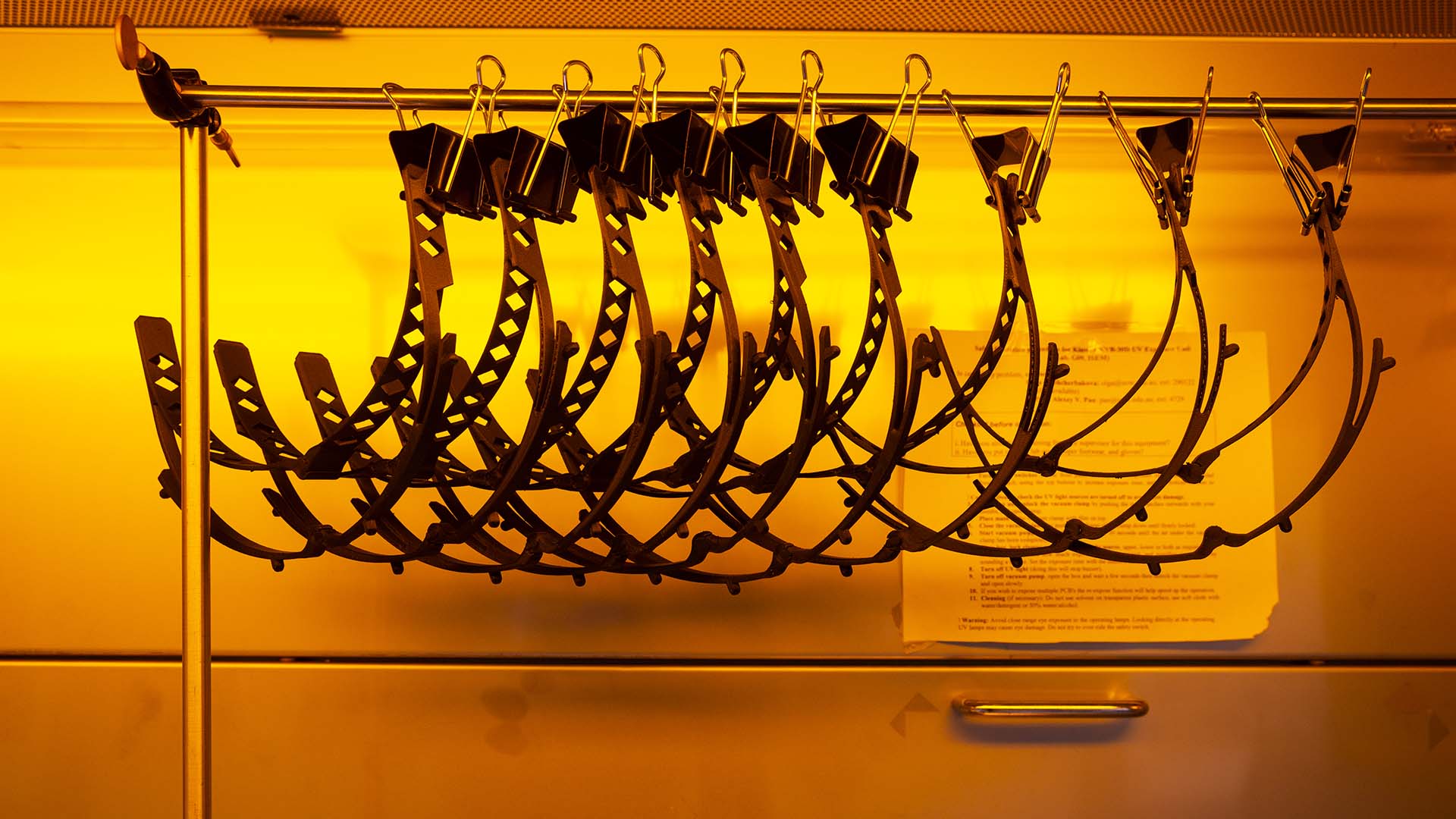April 16, 2020
Production of 3D printed medical face shields ramps up
Community-based makers asked to register interest in helping production
The University of Wollongong-led team producing 3D-printed medical face shields for health workers is calling on community-based makers to register their interest in helping 3D print the face shields should future demand exceed current manufacturing capacity.
Several teams from across the University have pooled their 3D printing capabilities to produce the face shields, which can help protect health workers from COVID-19.
This includes teams from TRICEP (Translational Research Initiative for Cellular Engineering and Printing), the ARC Centre of Excellence for Electromaterials Science (ACES), the Australian National Fabrication Facility (ANFF) Materials Node and UOW Makerspace.
Joining them in the effort are Illawarra specialist 3D printing companies Me3D and Cammpro.
The group worked with the Illawarra Shoalhaven Local Health District to refine the design of the shields. A finalised face shield design has been tested and approved by ISLHD, and is now being used in its hospitals.
TRICEP, Me3D and Cammpro have ramped up manufacturing to produce several hundred face shields a day. All of the shields are sterilised, packaged and dispatched from TRICEP to centralised contacts within ISHLD.
The group is able to meet current demand from ISLHD, but is aware that demand for face shields may dramatically increase and exceed current capacity.
With that in mind, community-based makers are being asked to register their interest in assisting in 3D printing face shields should the need arise.
UOW Makerspace Manager Jessica Grozdanov said it was important to get an idea now of what 3D printing capacity there was in the community.
“We want people to register their interest so that we can get an idea of what equipment, skills and capabilities we have around in our community,” Ms Grozdanov said.
“This will give us a better idea of how we can best utilise this community of makers to assist those in need. Creating this network will enable clear communication and guidance to those wanting to help but not sure how.
“At the moment, demand from the hospital is being met through the UOW facilities but that could change very quickly.
“If we wait to see if the demand increase we won’t be able to react quick enough. Through this register of community makers we can prepare, send our test designs for our makers to trial at home and iron out any issues, without the pressure of rushing to get as many made as quick as possible.”
ACES/ANFF/TRICEP Director Professor Gordon Wallace said the face shields initiative has demonstrated the power of innovation in times of crisis.
“We’ve always known 3D printing and bioprinting has the ability to change the way we think about making things and solving local and global problems, and this initiative highlights how 3D printing can improve supply chain issues during crises like the COVID-19 pandemic,” Professor Wallace said.
“I’m thrilled to see doctors, academics, engineers and researchers collaborating to solve community challenges quickly, and I’m grateful for our local industry partners like Me3D and CammPro who are able to support this initiative, and now have 3D printing farms running day and night to meet supply demands.”
Community makers can register their interest at https://forms.gle/kaCSgo21h7LASLuU9 or email makerspace@uow.edu.au for further information.
